Velas Village Turtle Festival
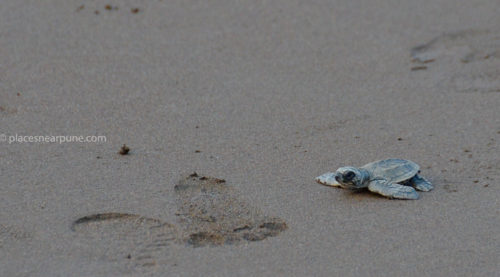
Velas is a remote village on the Konkan coast which comes into prominence on the tourist circuit from early feb to mid March. Olive Ridley turtles come to the Velas beach every oct-nov to lay their eggs. These turtles always return to the same beach they were born on. So, the ones coming now were the ones who were born on the same beach 12-15 years ago. Until about a decade ago, the turtle eggs were plundered by the villagers. With the joint efforts of a NGO (Sahyadri Nisarga mitra) and the village committee, the entire village has to taken to turtle conservation. During the egg laying season, the eggs are collected and kept in a protected area. During the hatching season i.e. Feb-mar, tourists flock to see the tiny turtles make their baby steps towards the might sea. This is truly a sight to watch.
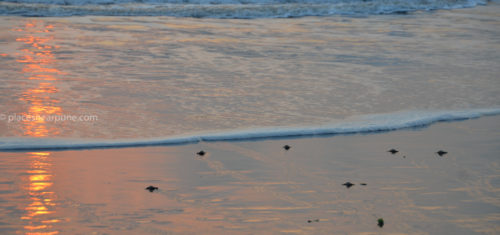
How to go to Velas: It is around 5-6 hours drive from Pune (Magarpatta as a base). The easiest way is through Tamhini. Google shows a route through Mhasala, but it actually takes longer as it involves a boat crossing which you cannot time/depend on. You can follow the route given in the map below i.e. put Goregaon as an intermediate destination. Important thing to note: There is a place called “Velas Beach, Velas Agar”, which is the default option on many GPSs. But this is far,far away, somewhere north of Diveagar. One of my friends did reach this place while he was supposed to come with us to the other Velas 🙂 But if you do reach this Velas or if you are staying at Diveagar, Shrivardhan or Harihareshwar, the best way to reach velas would be to take the boat (takes cars too) at Bagmandla near Harihareshwar.

Accommodation / Stay options at Velas: There are no hotels in Velas. But almost every house becomes a homestay during the turtle season. The contact numbers of the main homestays can be found at this link. Mobile connectivity is not there at this village. This year, i heard that the landlines were also down. So, it is very difficult to reach them. But most of the mobiles are on whatsapp (there is internet, but no voice!). So message them and they will get back to you usually in a day. Almost all of the homestays are of the dormitory type i.e. mattresses are put on the floor in the main room and many people share the room/bathroom. Only two families (as of 2016) had rooms with attached bathrooms. They are Mr. Omkar Nijasure and Mr. Amol Soman (Amol’s house is veg only). They have 4 rooms each. We stayed in the 4 rooms of Mr.Amol. The average cost is around 600 a person including all meals. For the rooms, it was around 800 a person. This is a very good deal as the food is home cooked and awesome. If you are Mr.Amol’s place, ask for their Modaks and Thalipeeth 🙂 The weekend that we stayed, there were 125 cars and 2 buses in that small village with tiny lanes. A mela atmosphere, but very nice!
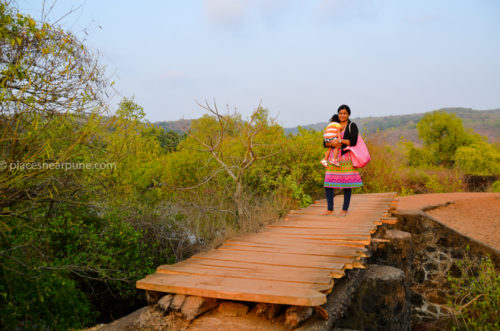

The main beach is at the other end of the village. Due to the crowd and the narrow lanes, it is better if you walk down. From the main road, the access to the beach is through a narrow path and is around half a km. So, there is some walking needed. On this path, you can see lot of mangroves (with their roots jutting outside). When we were walking back to the road at night, we saw lot of fireflies too (the first time for me).

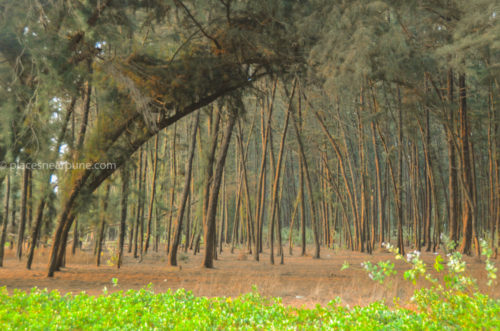
Velas beach is actually very clean and quite big. So, velas also makes up for a nice beach destination and not just for the turtles. Because of its relative remoteness, you can be assured of minimal crowds. The kids had lot of fun in the water!
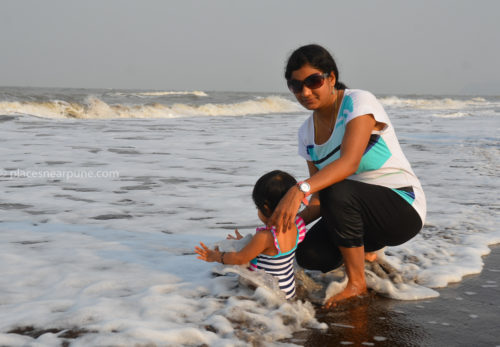

The turtle release ceremony: The ‘ceremony’ happens twice everyday, 6 am and 6 pm. Yes, people are up and ready by 6 at the beach 🙂 Mr. Mohan Upadhye is one of the main figures in turtle conservation in the village. He is an employee of the forest department and oversees the conservation efforts. He and a group of volunteers go over to the protected area and check the nests for any baby turtles which have hatched. There is lot of enthusiasm in the tourists as this happens and any turtle found is cheered.
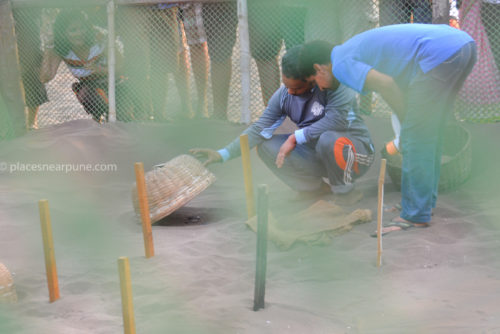
Once all the nests are checked, the turtles are collected in a basket and taken close to the water for a release. There, a fenced off area is created within which the turtles are released. In spite of repeated requests from the volunteers, there were always the dumb/smart people who insisted on using flash and then respond with “Oh, i thought that the flash was off!”. The guy in the blue tshirt carrying the basket is Mohan.
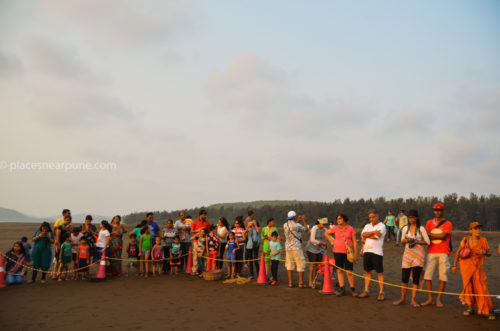
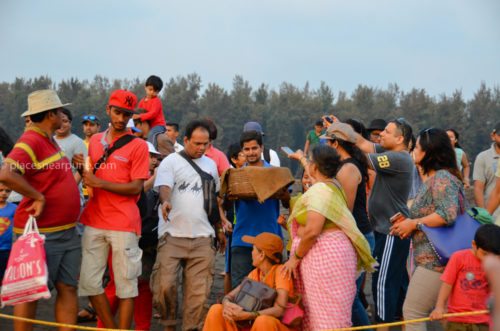
Then, they are released onto the sand. He explained that they are released on the sand and not directly to the water as this is the natural process that happens if they were to come out of the nests themselves and go to the water. This small stretch on the sand is necessary to strengthen their flipper muscles to take on the sea. The way these baby turtles make their way to the water is amazing to watch. Accompanied by “Bhaag Milkha Bhaag” and people choosing their turtles, it becomes a virtual race where everyone wins. When the first wave hits the turtle and it disappears, the cheer from the crowd has to be experienced. Some of them get the extra help from the volunteers so that they do not get pushed back by big waves. The volunteers request people to stay away from the water for at least 10 minutes after the last turtle goes in so that we don’t inadvertently step on any of them still close to the edge of the water. In 2016, the holi weekend was the main rush weekend. We were there that weekend combining Velas with a trip to Kelshi. That Sunday evening, a record 22 turtles hatched (a 12 yr record, it seems).
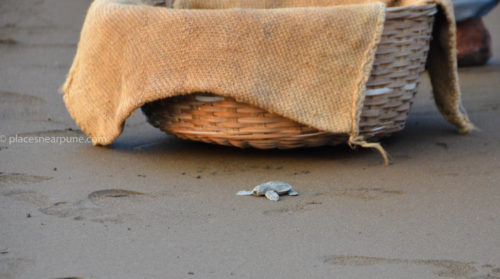
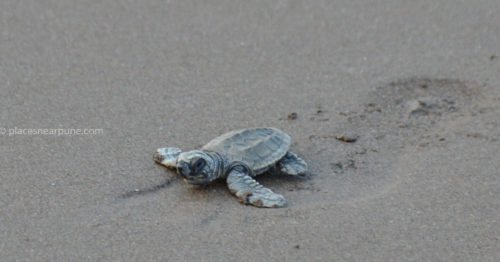
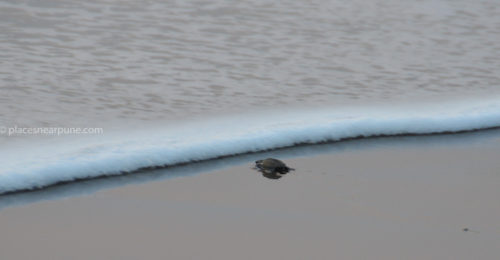

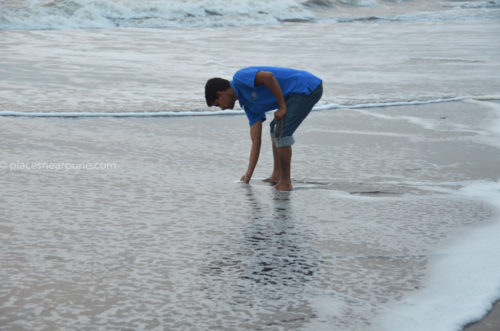
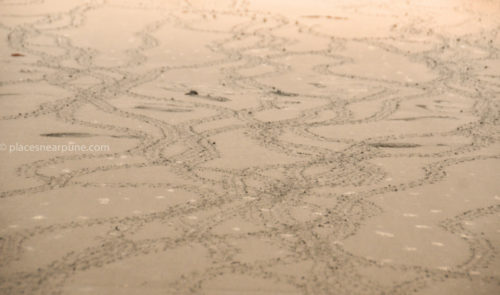
So, what do you do during the day then? You can drive up to Bankot Fort, a 15 min ride from velas. This fort has good view points towards the bay and is a great place for the evening. We started at 4 pm from velas, roamed around the fort until 5 pm, then drove over to the 6 pm ceremony. You can drive beyond the exit point to the beach and climb the road to a hill which has lot of mango farms. If you are there in summer, feast on mangoes!
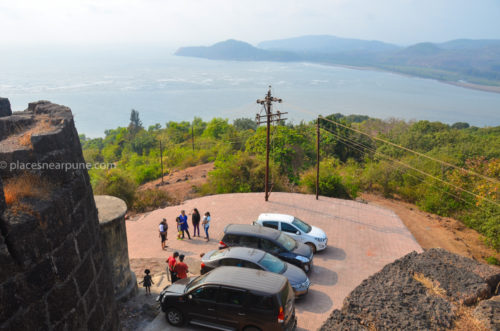

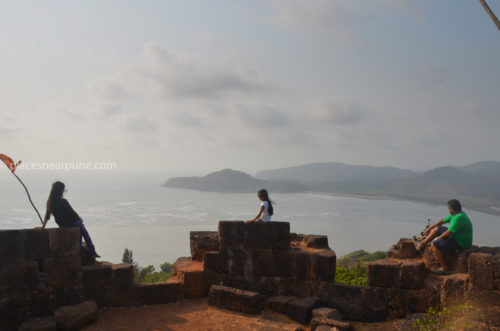
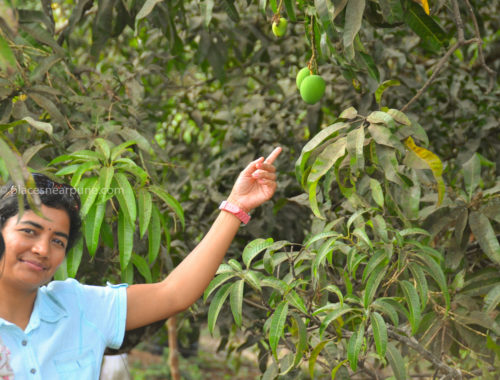
Trivia: How do you identify the difference between a turtle and a tortoise? yes, they are different 🙂 A turtle is primarily water-bound while a tortoise spends most of the time on land. So, a tortoise has legs, resembling an elephant’s foot while a turtle has flippers to help it swim.
If you don’t want the trouble of finding a place to stay, driving over or getting the plan done, you cal always join many of the groups which organise trips to Velas. One such group that i have heard positive reviews about is Western Routes. You can find more details on their FB Page.
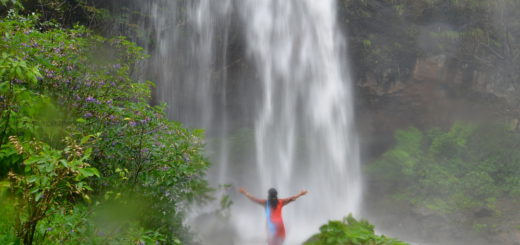
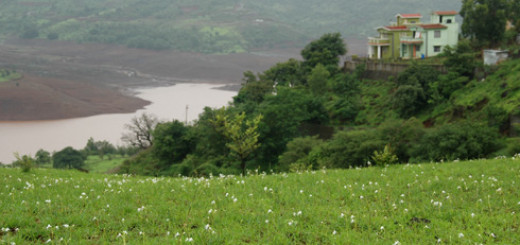
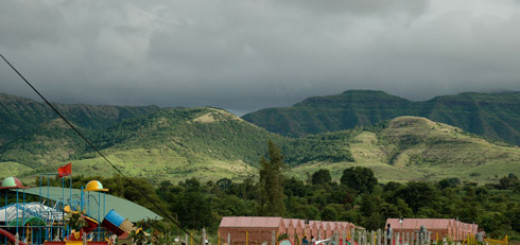
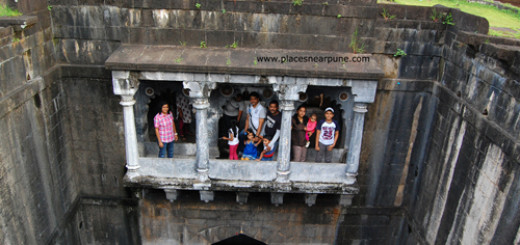
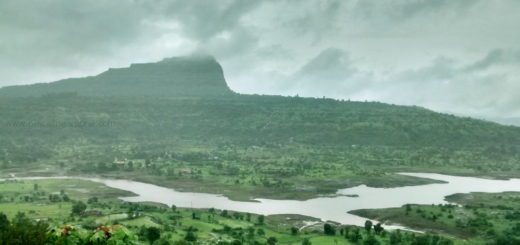
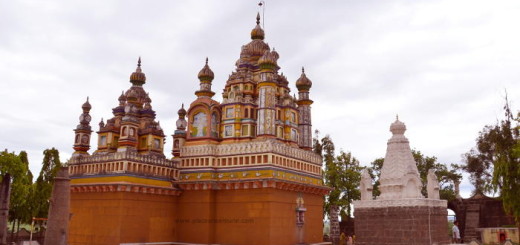
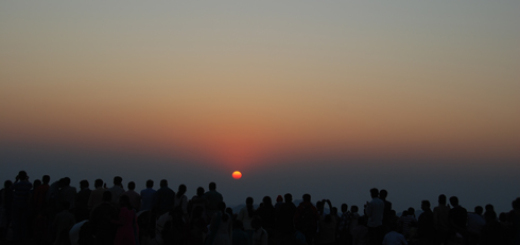
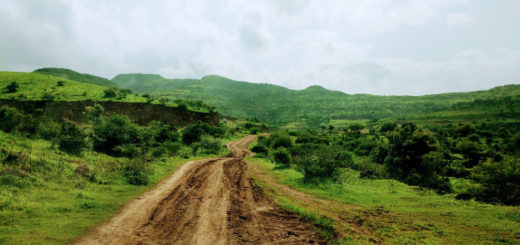
Dr Sachin here. Dear Rajaram, can u pl share ur mob no? Thx I m from Pune & wll like to talk to u bout trip
Dear Rajaram, Dr Sachin here. Can u pl share ph no of home stay owners @ Velas. Thx
Very nice blog ….beautiful images…